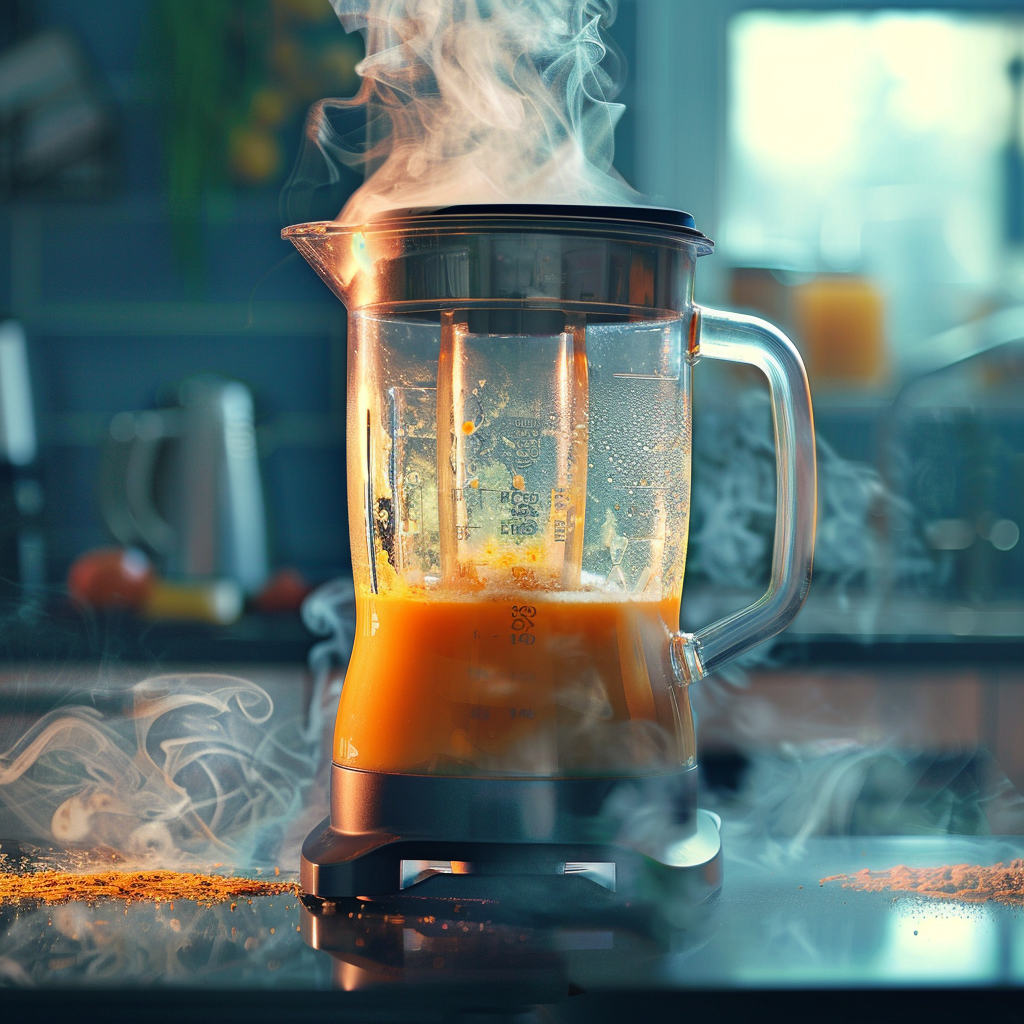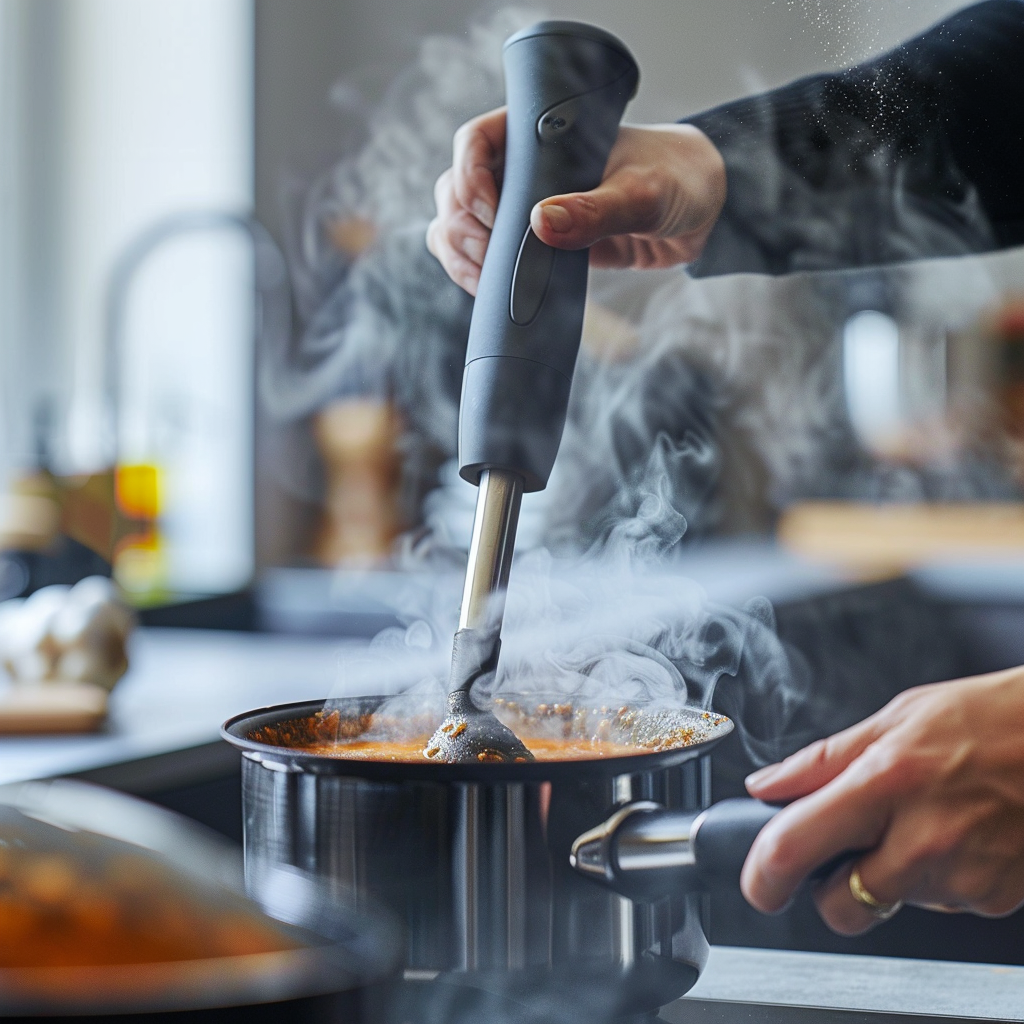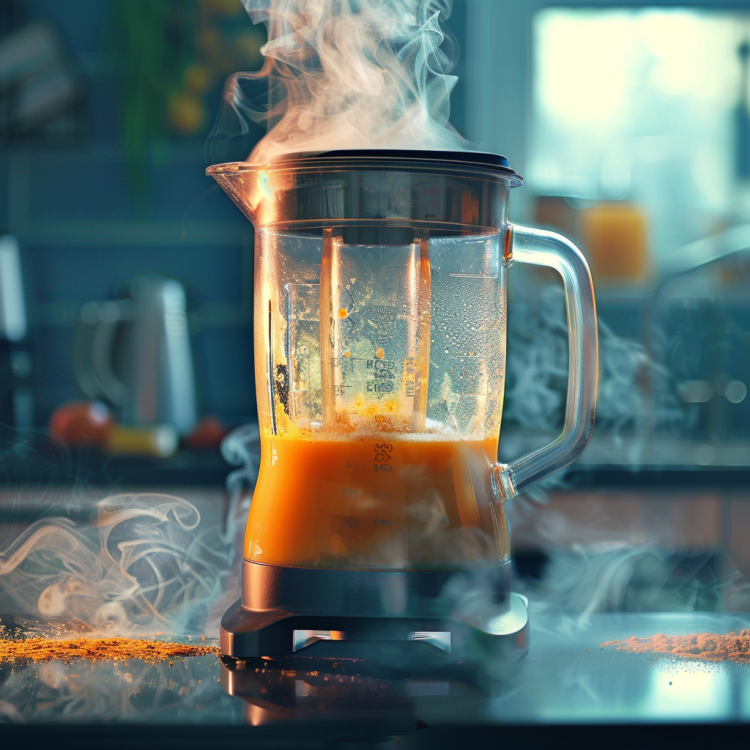
Hand blenders, also known as immersion blenders, are a popular kitchen tool for their versatility and convenience. However, while they are extremely useful for tasks like blending soups, sauces, and smoothies, they do come with certain risks that users should be aware of to ensure safe and effective use.
One of the primary risks associated with using a hand blender is the potential for injury from the sharp blades. Hand blenders are designed to blend food quickly and efficiently, and this efficiency comes from the power and sharpness of the blades. If the blades come into contact with your skin, they can cause serious cuts. This risk is particularly high if you attempt to clean the blades without first unplugging the blender. It’s essential to always ensure the appliance is turned off and unplugged before handling the blades or attempting to clean the device.
Another significant risk involves the splattering of hot liquids. When blending hot foods, especially liquids like soups, there is a danger that the contents could splatter and cause burns. This can happen if the blender is not fully submerged in the liquid or if the container used is too shallow. The sudden movement of the blades can cause hot food to splash out, leading to potential burns on your hands or face. To minimize this risk, it’s advisable to use a deep container and start blending at a lower speed before gradually increasing it.
Motor overheating is another risk that comes with the extended use of a hand blender. Continuous operation for long periods can cause the motor to overheat, which may not only damage the appliance but also pose a fire hazard. It’s important to allow the blender to rest after a few minutes of use to prevent overheating. Overheating can be particularly problematic in models that are not designed for heavy-duty use, as the motor might not be able to handle the strain of continuous blending.
There is also the risk of food contamination if the hand blender is not properly cleaned after each use. Food particles can get trapped in the blades or other parts of the blender, and if not thoroughly cleaned, these remnants can harbor bacteria. This can lead to contamination in future uses, which is especially concerning when preparing food for young children or individuals with compromised immune systems. To avoid this, it’s crucial to disassemble the blender as much as possible and clean each part thoroughly with warm soapy water.
Lastly, as with any electrical appliance, there is a risk of electric shock if the hand blender is used improperly. This can happen if the appliance is used near water or if it is plugged in or unplugged with wet hands. It’s vital to ensure that your hands are dry and that the blender is kept away from water sources when in use.
Is a Hand Blender Safe?
Hand blenders are generally safe to use, provided that the user follows the proper safety precautions and uses the appliance according to the manufacturer’s instructions. These devices are designed to make food preparation easier, and when used correctly, they pose minimal risk. However, understanding and mitigating potential dangers is key to ensuring safe usage.
The sharpness of the blades is one of the main safety concerns with hand blenders. While these blades are what make the blender effective, they also require careful handling. Never attempt to adjust, remove, or clean the blades while the blender is plugged in. Accidental activation while handling the blades can result in serious injuries. It’s also important to be cautious when washing the blades; use a brush or sponge, and avoid direct contact with the blades.
Another aspect of hand blender safety is preventing splatters, especially when blending hot liquids. Burns from hot liquid splatters are a common injury associated with hand blenders. To prevent this, ensure that the blender is fully immersed in the liquid before turning it on. Additionally, using a tall, narrow container can help contain the liquid and reduce the chance of splattering. Starting at a low speed and gradually increasing the power can also help in controlling the splatter.
Overheating is a safety issue that can arise from prolonged use. The motor in a hand blender is not typically designed for continuous operation over extended periods. To prevent overheating, it’s advisable to use the blender in short bursts, giving the motor time to cool down between uses. Overheating not only risks damaging the appliance but can also be a fire hazard. Always follow the manufacturer’s guidelines on the recommended usage time to keep the appliance functioning properly.
Cleaning is another critical factor in ensuring the safe use of a hand blender. After each use, it’s essential to clean the blender thoroughly, paying close attention to the areas around the blades and any crevices where food particles might get trapped. This prevents food residue from building up, which could lead to bacterial growth and contamination in future uses. Some hand blender models have dishwasher-safe parts, making the cleaning process easier and more thorough.
Electrical safety should also be a priority when using a hand blender. Always ensure that your hands are dry when plugging in or unplugging the appliance. The blender should be kept away from water or wet surfaces during use to reduce the risk of electric shock. If the blender or its cord becomes damaged, do not attempt to use it until it has been repaired or replaced. Safety features like a non-slip grip and a stable base can also help prevent accidents during use.

What Are the Disadvantages of Hand Blenders?
While hand blenders are a handy tool in the kitchen, offering convenience and versatility, they do come with certain disadvantages that may affect their suitability for all tasks. Understanding these drawbacks can help you determine when a hand blender is the right tool for the job and when another appliance might be more appropriate.
One of the primary disadvantages of hand blenders is their limited power compared to traditional countertop blenders. Hand blenders are typically less powerful, which means they may struggle with tougher tasks such as crushing ice or blending hard vegetables. This limitation can be a drawback when you need a more powerful blend, such as for making smoothies with frozen fruit or for pureeing fibrous vegetables. For these tasks, a full-sized blender or food processor might be more effective.
Hand blenders also have a smaller capacity, which can be limiting if you’re preparing large quantities of food. Because you blend directly in the pot or container, the size of the batch is restricted by the container’s size. This can be inconvenient if you need to blend large volumes of soup, sauce, or other mixtures. In contrast, a countertop blender typically has a larger jug, allowing you to blend more at once. If you frequently cook for a large family or like to prepare food in bulk, a hand blender might not be the most efficient tool.
Another disadvantage of hand blenders is the potential for splattering, particularly when blending liquids. Unlike traditional blenders that contain food within a sealed jar, hand blenders require you to manually control the blending process in an open container. This increases the likelihood of splattering, especially if the blender is not fully submerged in the liquid. Splattering can create a mess in your kitchen and also pose a burn risk if you’re blending hot liquids. Careful control and the use of a deep container can mitigate this issue, but it remains a common inconvenience.
Fatigue is another consideration, especially if you’re blending for an extended period. Hand blenders require you to hold the appliance while blending, which can lead to hand and arm fatigue, particularly if you’re blending something that takes time to achieve the desired consistency. This can be more physically demanding than using a countertop blender, where you simply press a button and let the machine do the work. For those with weaker grip strength or who are blending large quantities, this can be a significant drawback.
Finally, while hand blenders are versatile, they may not be as multifunctional as other kitchen appliances. For example, they typically lack the ability to perform tasks like chopping vegetables, kneading dough, or grinding nuts, which are functions that a food processor might offer. While they excel at blending, pureeing, and emulsifying, they are not as suitable for tasks that require more varied processing capabilities. Depending on your cooking habits, you might find that a hand blender alone isn’t enough to meet all your needs.
What Precautions Should You Take When Using a Hand Blender?
Using a hand blender safely and effectively requires attention to a few key precautions. By following these guidelines, you can minimize risks and ensure that the appliance works as intended without causing injury or damage.
First and foremost, always ensure that the hand blender is unplugged when attaching or detaching the blades, or when you’re cleaning the appliance. The blades of a hand blender are extremely sharp, and accidental activation while handling the blades can lead to severe cuts. Even if the appliance is turned off, it’s a good practice to disconnect it from the power source before making any adjustments or cleaning the blades.
When blending hot liquids, take extra care to avoid splattering, which can cause burns. Use a tall, narrow container that can contain the liquid more effectively, and ensure that the blades are fully submerged before turning on the blender. Starting at a low speed and gradually increasing it can help prevent sudden splashes. Additionally, don’t overfill the container, as this increases the likelihood of spills and splatters. It’s also a good idea to tilt the container slightly to create a vortex that helps pull the liquid down towards the blades, reducing the risk of splattering.
To prevent the motor from overheating, avoid running the hand blender continuously for extended periods. Most hand blenders are not designed for heavy-duty use and should be operated in short bursts with breaks in between. Overheating can damage the motor and may also pose a fire hazard. If you notice the appliance becoming unusually hot or if it starts emitting a burning smell, stop using it immediately and allow it to cool down.
Cleaning your hand blender thoroughly after each use is another critical precaution. Food particles can easily become trapped around the blades or in crevices, leading to bacterial growth if not properly cleaned. Disassemble the parts as much as possible and wash each one with warm soapy water. If your blender has dishwasher-safe parts, this can make the cleaning process easier. Dry all parts completely before reassembling or storing the blender to prevent rust or other damage.
Electrical safety is also essential when using a hand blender. Ensure that your hands are dry when plugging in or unplugging the appliance, and keep the blender away from water or wet surfaces during use. Never immerse the motor unit in water, as this can cause a short circuit or electric shock. If the cord or plug becomes damaged, do not use the appliance until it has been repaired or replaced by a professional.
Lastly, when using a hand blender, be mindful of your surroundings. Secure loose clothing, jewelry, and long hair to prevent them from becoming entangled in the blender. It’s also important to keep the appliance out of reach of children when in use, as the blades can cause injury if mishandled.
What Is the Risk of a Blender?
Blenders, whether hand-held or countertop models, come with certain risks that users should be aware of to ensure safe operation. These risks can range from injury due to the blades to potential hazards related to the motor or electrical components.
One of the most significant risks of using a blender is the possibility of cuts and injuries from the sharp blades. Blender blades are designed to be extremely sharp to handle tough ingredients, and if these blades come into contact with your skin, they can cause severe injuries. This risk is particularly high during cleaning or if the blades are exposed when the blender is not in use. To mitigate this risk, always ensure the blender is unplugged before handling the blades, and use a brush or sponge to clean them carefully.
Another major risk involves the blending of hot liquids, especially in countertop blenders. If the blender’s lid is not securely fastened, or if the appliance is overfilled, the pressure from the hot liquid can cause the lid to pop off, leading to splatters and burns. This risk can be reduced by allowing hot liquids to cool slightly before blending and by holding the lid down firmly during operation. It’s also advisable to start blending at a low speed to prevent sudden surges of liquid.
Motor overheating is another common issue with blenders, particularly if they are used for heavy-duty tasks or run continuously for too long. Overheating can damage the motor, leading to appliance failure, and in extreme cases, it can pose a fire hazard. To prevent this, follow the manufacturer’s instructions regarding usage limits, and allow the motor to rest between blending cycles.
Blenders also pose an electrical hazard if they are used improperly. Like all electrical appliances, blenders should be kept away from water and used with dry hands to avoid the risk of electric shock. Any damage to the cord or plug should be addressed immediately by a professional, as continued use could result in a short circuit or fire.
In rare instances, especially with countertop blenders, there is a risk of the appliance “exploding” if hot liquids are blended without proper venting. The steam from hot liquids can create pressure inside the blender jar, causing the contents to erupt violently. This can lead to serious injuries from both burns and flying glass or plastic shards. To prevent this, always vent the blender lid or use a dedicated venting attachment when blending hot liquids, and never fill the jar beyond the maximum fill line.
By understanding these risks and taking appropriate precautions, you can safely use your blender for a wide range of cooking tasks, from making smoothies to pureeing soups, while minimizing the chances of accidents or injuries.

Conclusion
Hand blenders are a versatile and convenient kitchen tool, but they come with specific risks that require careful attention. Whether it’s the risk of injury from sharp blades, splattering hot liquids, motor overheating, or electrical hazards, each can be managed with proper use and precautions. By understanding these risks and the necessary safety measures, you can use your hand blender safely and effectively. Additionally, while hand blenders have some disadvantages compared to other appliances, they remain an invaluable tool for quick and easy food preparation.



